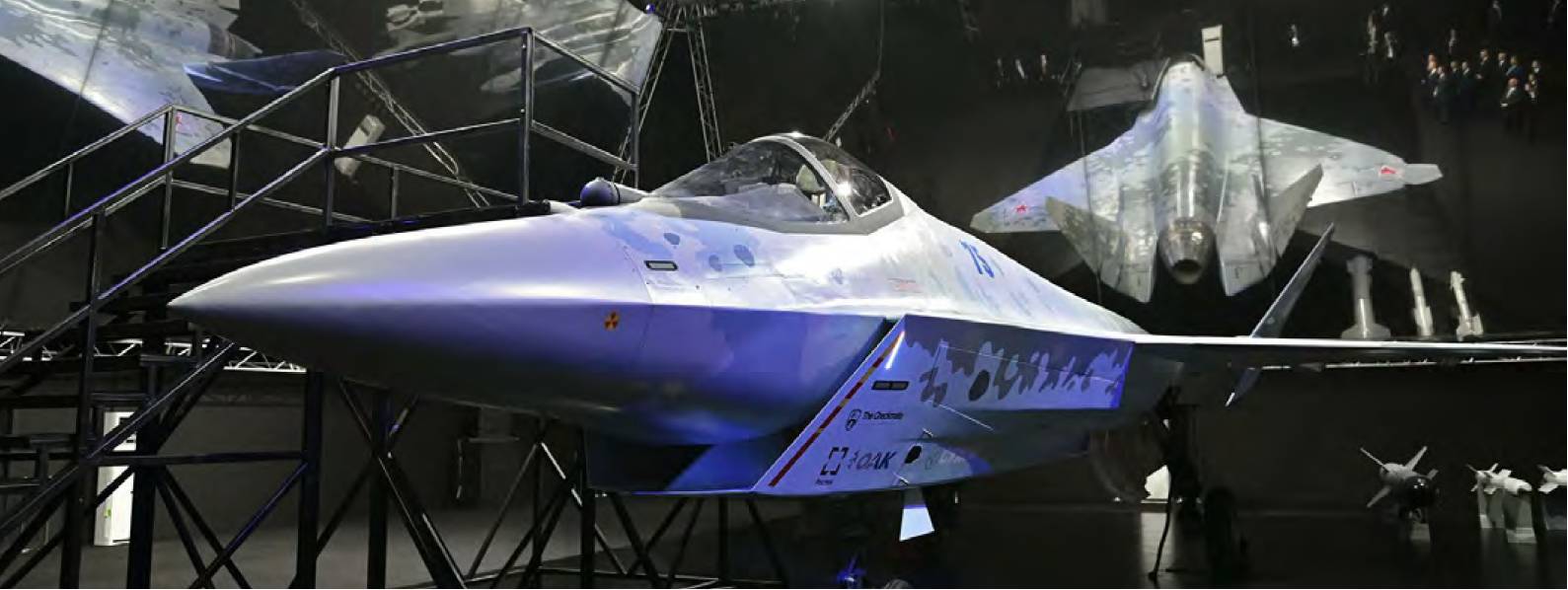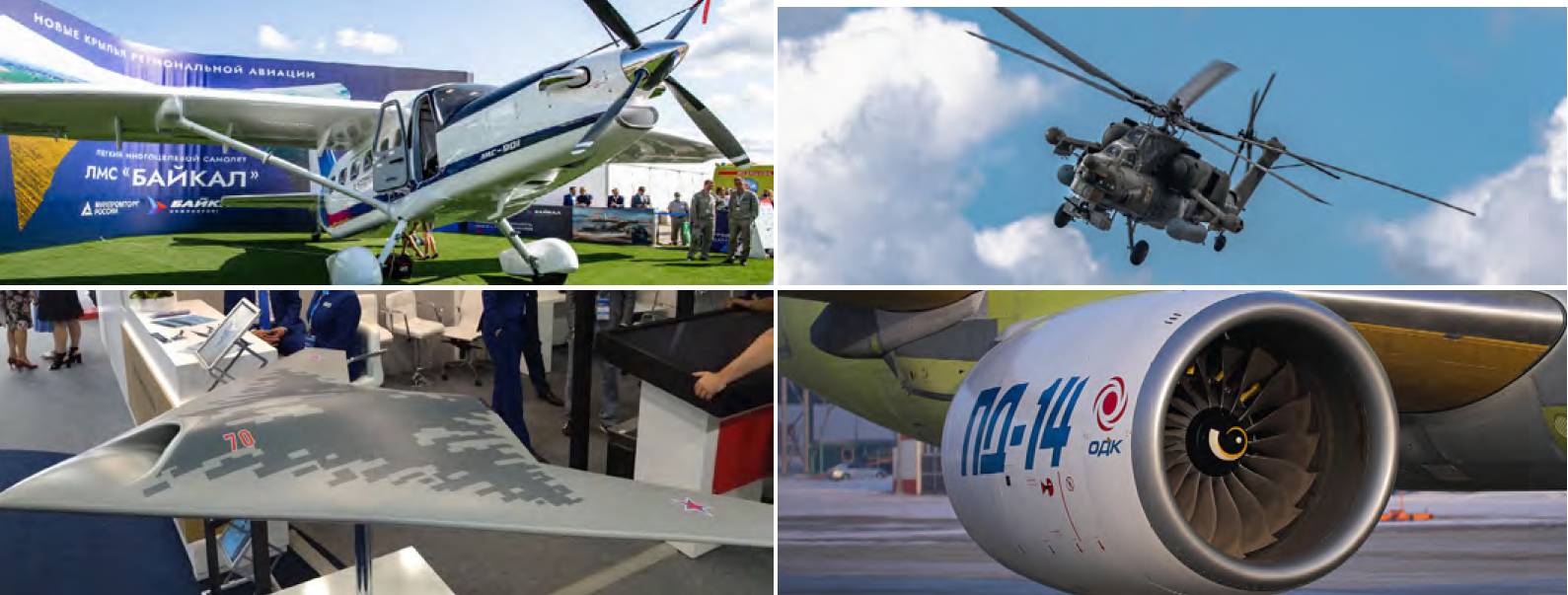AEROSPACE MAKS show report
MAKS factored
EUGENE GERDEN reports from the Moscow MAKS air show in July – a showcase for Russian aviation and aerospace.
 The Su-74 ‘Checkmate’ fighter is a single-engine design optimised for the export market. UAC/YouTube
The Su-74 ‘Checkmate’ fighter is a single-engine design optimised for the export market. UAC/YouTube
The 25th anniversary MAKS air show took place in Russia in the airfield of the Gromov Flight Research Institute of the city of Zhukovsk (Moscow regions) from 20 to 25 July. This year the number of visitors exceeded 138,000, which is a new record for the show.
With the show focusing particularly on Russian aviation, this year, claim the organisers, saw 538 Russian and 91 foreign companies participate in the show. According to official information, the overall value of contracts, signed during the show exceeded RUB 265bn ($3.58bn). These figures exceeded results for 2019, both in terms of the number of agreements signed and the scale of business programmes.
 This year saw a number of new announcements and new projects revealed.
This year saw a number of new announcements and new projects revealed.
The biggest news of MAKS 2021 became the reveal of a fundamentally new Russian fighter, with the official presentation taking place on the opening day of the event on 20 July. The fifth-generation Su-74 ‘Checkmate’ light tactical aircraft, which is capable of carrying up to five air-to-air missiles, is intended primarily for export sales. It is intended primarily to compete with the F-35 fighter and export sales are particularly targeted at Middle East countries. (See Blueprint in August 2021 AEROSPACE.)
The unique Yak-40LL flying laboratory-made its first flight as part of flight tests at MAKS-2021. It is equipped with a hybrid power plant based on a gas turbine engine and a superconducting electric motor The first tests of the hybrid unit began in February in Novosibirsk. In flight tests one of the Yak-40 engines was replaced with a turboshaft gas turbine engine with an electric generator. The electric motor is installed in the forebody of the aircraft and uses the effect of high-temperature superconductivity and a cryogenic system.
A prototype of the LMS-901 ‘Baikal’ utility aircraft was officially presented in Zhukovsky. This aircraft is expected to be the successor to the legendary An-2 on regional airlines. The important elements of the project were the use of domestic components and assemblies, high maintainability in local conditions as well as efficiency.
The medium-haul MS-21-310 Russian commercial passenger aircraft was officially presented during the Show this year. It is characterised by advanced aerodynamics, engines and systems. Such characteristics of the aircraft are enabled by its extended wing made of polymer composite materials. The aircraft has the widest fuselage in its class (4.06m), while its capacity can be configured from 163 to 211 passengers. The flight range is up to 6,000km. The new Russian aircraft is intended to compete with similar size aircraft from Airbus and Boeing.
 Some of the aircraft on display at MAKS – clockwise from top left: LMS-901 Baikal, Mi-28 attack helicopter, Aviadvigatel PD-14 domestically developed turbofan now undergoing flight tests on the MS-21 airliner, model of S-70 Okhotnik-B UCAV. MAKS / EugeneGerden / MAKS / Rostec
Some of the aircraft on display at MAKS – clockwise from top left: LMS-901 Baikal, Mi-28 attack helicopter, Aviadvigatel PD-14 domestically developed turbofan now undergoing flight tests on the MS-21 airliner, model of S-70 Okhotnik-B UCAV. MAKS / EugeneGerden / MAKS / Rostec
Also on show at MAKS was the Il-114, a short-haul turboprop aircraft designed to replace the An-24 and Tu-134. One of its advantages is the ability to operate from short runways, including Arctic latitudes. The aircraft is also adapted to poorly equipped airfields: it has a built-in gangway and is capable of starting engines without assistance. According to its developers, the aircraft aims to compete in both civil and military markets.
This is the first military transport aircraft that was designed from the scratch in Russia after the collapse of the USSR. The Il-112V will be used to transport paratroopers and military equipment. Its maximum load lifting capacity is 5t. The cruising speed of the aircraft is 470km/h, while the flight range is 1,200km. After the first flight, which took place in 2019, the MoD made a number of comments – with the main complaint being excessive weight. Since then, the designers have carried out a number of measures to reduce the weight, including changing the design of the cargo door, replacing some metal parts with composite ones and modifying the fuselage.
One of the most interesting announcements at the show was the Strizh supersonic civil aircraft from the Zhukovsky Central Aerodynamic Institute (TsAGI). It features a low sonic boom design while ensuring high aerodynamic characteristics, stability and controllability over the entire range of flight modes. The innovative metal-composite structure of the aircraft is created using biomicry principles. The use of alternative materials in the construction of the aircraft ensures some significant advantages in terms of its weight and fuel economy.
The newest transport and combat helicopter, Mi8AMTSh-VN, was shown for the first time. This is the most modern version of the well-known Russian multipurpose helicopter, which was developed on the basis of experience from recent Russian military experiences, including Syria. The helicopter is equipped with VK-2005-03 engines, which operate well in hot climates, while its cockpit is protected with titanium plates. The protection of the transport compartment is ensured with light aramid armour. The helicopter’s armament consists of external guns, machine guns, guided and unguided missiles. With its impressive firepower, the updated Mi-8 is called a ‘flying airborne combat vehicle.’
No MAKS show would be complete without a space element and this year was no different. Among this year’s interesting exhibits was a prototype of the new Sokol-M rescue spacesuit for cosmonauts who will fly to the Moon on the crewed spacecraft Orel, as well as a model of the Angara-A5V launch vehicle with a hydrogen-fueled third stage. Using hydrogen fuel, the Angara is supposed to lift 37t of payload into low-Earth orbit, which is significantly more than the carrying capacity of the usual heavy Angara-A5.